-
 Bitcoin
Bitcoin $87,160.3686
2.59% -
 Ethereum
Ethereum $1,577.5291
-0.58% -
 Tether USDt
Tether USDt $1.0000
0.00% -
 XRP
XRP $2.0804
0.22% -
 BNB
BNB $596.3334
0.99% -
 Solana
Solana $136.5658
-0.15% -
 USDC
USDC $1.0000
0.00% -
 Dogecoin
Dogecoin $0.1584
1.77% -
 TRON
TRON $0.2458
-0.32% -
 Cardano
Cardano $0.6208
0.05% -
 Chainlink
Chainlink $13.1006
-1.96% -
 UNUS SED LEO
UNUS SED LEO $9.1412
-1.97% -
 Avalanche
Avalanche $19.9880
2.50% -
 Stellar
Stellar $0.2528
3.56% -
 Shiba Inu
Shiba Inu $0.0...01238
-0.19% -
 Toncoin
Toncoin $2.8930
-3.79% -
 Sui
Sui $2.2031
4.44% -
 Hedera
Hedera $0.1692
1.25% -
 Bitcoin Cash
Bitcoin Cash $343.2002
2.28% -
 Polkadot
Polkadot $3.8296
-1.99% -
 Hyperliquid
Hyperliquid $17.9378
1.39% -
 Litecoin
Litecoin $78.0777
0.75% -
 Dai
Dai $0.9999
0.00% -
 Bitget Token
Bitget Token $4.4322
0.90% -
 Ethena USDe
Ethena USDe $0.9993
0.00% -
 Pi
Pi $0.6347
-0.88% -
 Monero
Monero $214.7110
-0.08% -
 Uniswap
Uniswap $5.2643
-0.22% -
 Pepe
Pepe $0.0...07787
2.99% -
 Aptos
Aptos $4.9970
-0.84%
What are the common trading strategies for Bitcoin spot trading?
Bitcoin spot trading offers diverse strategies, from long-term DCA minimizing risk to high-frequency scalping prioritizing speed and small profits, with swing trading and arbitrage offering medium-term opportunities.
Mar 01, 2025 at 01:30 am
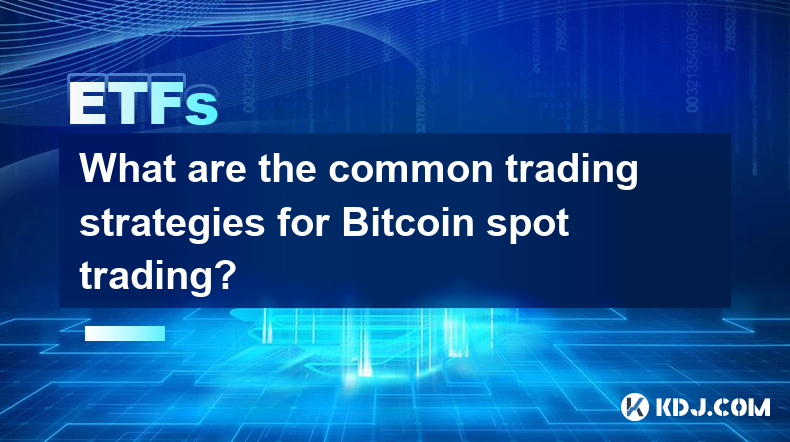
What are the common trading strategies for Bitcoin spot trading?
Key Points:
- Dollar-Cost Averaging (DCA): A long-term strategy minimizing risk by consistently investing a fixed amount regardless of price fluctuations. This mitigates the impact of market volatility.
- Trend Following: Identifying and capitalizing on established price trends (uptrends or downtrends) using technical indicators and chart patterns. This strategy requires understanding momentum and market sentiment.
- Scalping: Short-term, high-frequency trading aiming for small profits from minor price movements. It necessitates quick decision-making and low transaction fees.
- Arbitrage: Exploiting price discrepancies between different cryptocurrency exchanges to profit from buying low and selling high simultaneously. This requires access to multiple exchanges and efficient execution.
- Swing Trading: Medium-term strategy focusing on capturing price swings within a specific timeframe (days to weeks). This approach requires identifying support and resistance levels.
- Value Investing: Identifying undervalued Bitcoin based on fundamental analysis, holding for the long term anticipating appreciation. This is a long-term approach requiring in-depth market understanding.
Common Bitcoin Spot Trading Strategies Explained:
- Dollar-Cost Averaging (DCA): Dollar-cost averaging is a passive investment strategy where a fixed amount of money is invested in Bitcoin at regular intervals, regardless of the price. This reduces the risk of investing a large sum at a market peak. Instead of trying to time the market, DCA smooths out the purchase price over time. If the price drops, you buy more Bitcoin for the same amount of money; if the price rises, you buy less Bitcoin but still participate in the upward trend. The key advantage is risk mitigation. By averaging the purchase price, you reduce the impact of volatility. A disadvantage is that you might miss out on significant price gains if the market experiences a sharp and sustained upward movement. However, the reduced risk often outweighs the potential for missed gains, especially for long-term investors with a lower risk tolerance. The effectiveness of DCA relies on the long-term bullish outlook on Bitcoin. It's not a strategy designed for short-term profits but rather for steady accumulation over time. Implementing DCA requires discipline and consistency. You need to commit to investing the predetermined amount at the set intervals, even during periods of market uncertainty or fear. Tools and platforms exist to automate the DCA process, simplifying the execution and ensuring adherence to the chosen schedule. The success of DCA depends on the chosen investment interval and the overall market trend.
- Trend Following: Trend following is an active trading strategy that involves identifying and capitalizing on established price trends. This strategy relies heavily on technical analysis, using indicators like moving averages, RSI, MACD, and chart patterns such as head and shoulders, flags, and pennants to identify the direction and strength of the trend. Traders using this approach will buy Bitcoin when a clear uptrend is identified and sell when a downtrend emerges or when the trend weakens. The key advantage of trend following is its simplicity and potential for substantial profits if the trend continues. However, it also carries significant risk. Identifying the true trend can be challenging, and market reversals can lead to significant losses. Moreover, trend-following strategies are susceptible to whipsaws – false signals that can lead to premature entries and exits. Effective trend following requires careful selection of indicators and a good understanding of market dynamics. Traders often use stop-loss orders to limit potential losses. Backtesting and rigorous risk management are crucial for success in trend following. It's essential to define clear entry and exit points based on the chosen indicators and to adjust the strategy based on market conditions. Over-reliance on any single indicator can be detrimental, and a diversified approach combining multiple indicators is often recommended. The timeframe for trend following can vary, from short-term day trading to longer-term swing trading, depending on the trader's preferences and risk tolerance.
- Scalping: Scalping is a high-frequency trading strategy that aims to profit from very small price movements. Scalpers typically hold their positions for a very short time, often just seconds or minutes. They rely on rapid execution and low transaction costs to generate profits. This strategy requires advanced technical skills, quick reflexes, and access to sophisticated trading tools. The key advantage of scalping is the potential to generate frequent profits, even in sideways markets. However, it is also extremely risky. The small profit margins mean that even minor slippage or transaction fees can quickly erode profits. Furthermore, the high frequency of trades increases the risk of errors and emotional decision-making. Scalping often requires the use of automated trading systems or bots to execute trades efficiently. Successful scalping demands a deep understanding of order books, market depth, and liquidity. Scalpers need to be able to identify subtle price movements and react instantly to capitalize on them. Risk management is paramount in scalping. Stop-loss orders are crucial to limit losses, and position sizing is vital to prevent catastrophic outcomes from a single losing trade. The high-pressure environment of scalping can be mentally demanding, requiring discipline, focus, and emotional control.
- Arbitrage: Crypto arbitrage involves exploiting price differences between different cryptocurrency exchanges. If Bitcoin is trading at a higher price on exchange A than on exchange B, an arbitrageur can simultaneously buy Bitcoin on exchange B and sell it on exchange A, pocketing the difference. This strategy requires access to multiple exchanges, efficient execution capabilities, and an understanding of market liquidity. The key advantage of arbitrage is the potential for risk-free profits. However, the profit margins are often small, and the strategy requires significant capital to generate substantial returns. Furthermore, arbitrage opportunities are often short-lived, and competition among arbitrageurs can quickly eliminate price discrepancies. Successful arbitrage requires sophisticated software and algorithms to identify and execute trades rapidly. Transaction fees and latency can significantly impact profitability. The speed of execution is critical, as delays can lead to missed opportunities or even losses. Arbitrage also involves managing risk associated with exchange security and potential regulatory changes. Diversification across multiple exchanges can help mitigate risk.
- Swing Trading: Swing trading is a medium-term trading strategy that aims to capture price swings within a specific timeframe, typically ranging from a few days to a few weeks. Swing traders identify support and resistance levels and look for opportunities to buy low and sell high within these ranges. This strategy combines elements of technical and fundamental analysis. The key advantage of swing trading is the potential for larger profits compared to scalping while requiring less constant monitoring than long-term investing. However, it also carries more risk than long-term holding, as the trader needs to correctly predict the direction and magnitude of price swings. Swing trading often involves the use of technical indicators and chart patterns to identify potential entry and exit points. Risk management is crucial, with stop-loss orders used to limit potential losses. Swing traders need to be patient and disciplined, avoiding emotional decisions based on short-term price fluctuations. Successful swing trading requires a good understanding of market dynamics and the ability to identify potential catalysts that could drive price movements.
- Value Investing: Value investing in Bitcoin involves identifying undervalued assets based on fundamental analysis and holding them for the long term, anticipating appreciation. This strategy is less focused on short-term price movements and more on the long-term value proposition of Bitcoin. The key advantage is the potential for significant long-term gains if the underlying asset appreciates in value. However, it requires a deep understanding of the cryptocurrency market, including factors influencing Bitcoin’s price and long-term adoption. Value investing necessitates patience and a long-term perspective, as it may take considerable time to see a return on investment. Risk assessment is crucial, and diversification within a broader investment portfolio is often recommended.
FAQs:
Q: What is the riskiest Bitcoin spot trading strategy?
A: Scalping is generally considered the riskiest due to its high frequency, small profit margins, and reliance on precise timing and low latency. The high volume of trades increases the likelihood of errors and emotional decisions, exacerbating potential losses.
Q: Which strategy is best for beginners?
A: Dollar-Cost Averaging (DCA) is often recommended for beginners due to its simplicity and risk mitigation. It requires less technical expertise and allows for consistent participation in the market without the pressure of timing the market perfectly.
Q: How much capital do I need to start Bitcoin spot trading?
A: The amount of capital needed depends on the chosen strategy. DCA can be started with small, regular investments, while arbitrage and scalping typically require significantly more capital to generate meaningful profits. Swing and trend following require a moderate amount of capital to effectively manage risk.
Q: What are the essential tools for Bitcoin spot trading?
A: Essential tools include a reputable cryptocurrency exchange with low fees, charting software with technical indicators, a secure wallet, and potentially automated trading software (depending on the chosen strategy). For arbitrage, access to multiple exchanges is crucial.
Q: How can I manage risk effectively in Bitcoin spot trading?
A: Effective risk management involves setting stop-loss orders to limit potential losses, diversifying your investments across different strategies or assets, avoiding over-leveraging, and only investing capital you can afford to lose. Thorough research and understanding of the chosen strategy are also crucial.
Q: Are there any legal considerations for Bitcoin spot trading?
A: Legal considerations vary by jurisdiction. It's crucial to understand and comply with the relevant tax laws and regulations in your country or region regarding cryptocurrency trading and capital gains. Always ensure you are using regulated and reputable exchanges.
Q: What are the fees involved in Bitcoin spot trading?
A: Fees vary across exchanges and include trading fees (maker/taker fees), deposit/withdrawal fees, and potentially other charges. It's important to compare fees across different exchanges to minimize costs. High-frequency trading strategies like scalping are particularly sensitive to transaction fees.
Disclaimer:info@kdj.com
The information provided is not trading advice. kdj.com does not assume any responsibility for any investments made based on the information provided in this article. Cryptocurrencies are highly volatile and it is highly recommended that you invest with caution after thorough research!
If you believe that the content used on this website infringes your copyright, please contact us immediately (info@kdj.com) and we will delete it promptly.
- Lightchain AI: The Future of Cryptocurrency
- 2025-04-22 05:30:13
- Coinbase Expands XRP Futures Contracts Trading
- 2025-04-22 05:30:13
- Difficulty Spike and Hashrate Drop Lengthen Block Times
- 2025-04-22 05:25:13
- Despite the Harshest Profit Squeeze in Half a Decade, Bitcoin Mining on U.S. Soil is Consolidating and Gathering Momentum
- 2025-04-22 05:25:13
- Bitcoin (BTC) markets ticked higher
- 2025-04-22 05:20:13
- Shiba Inu (SHIB) and Lightchain AI (LCAI) Are Rapidly Gaining Ground, Positioning Themselves as Serious Competitors to Dogecoin.
- 2025-04-22 05:20:13
Related knowledge

What is the difference in returns between long-term holding of a Bitcoin ETF and holding Bitcoin directly?
Apr 09,2025 at 04:15am
When considering the difference in returns between long-term holding of a Bitcoin ETF and holding Bitcoin directly, it's essential to understand the nuances and factors that affect each investment option. Both approaches have their unique advantages and potential drawbacks, which can significantly impact the overall returns over time. Understanding Bitc...
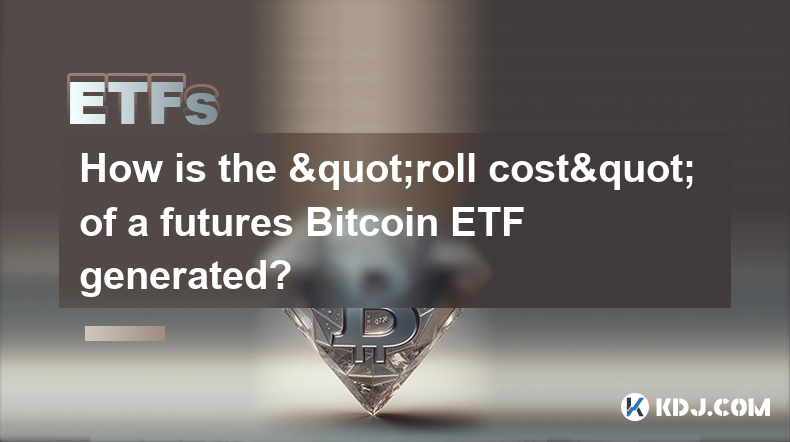
How is the "roll cost" of a futures Bitcoin ETF generated?
Apr 08,2025 at 01:22pm
The 'roll cost' of a futures Bitcoin ETF is a critical concept for investors to understand, as it directly impacts the performance of the ETF. In this article, we will delve into the mechanics of how the roll cost is generated, exploring the underlying processes and factors that contribute to this cost. Understanding Futures ContractsFutures contracts a...
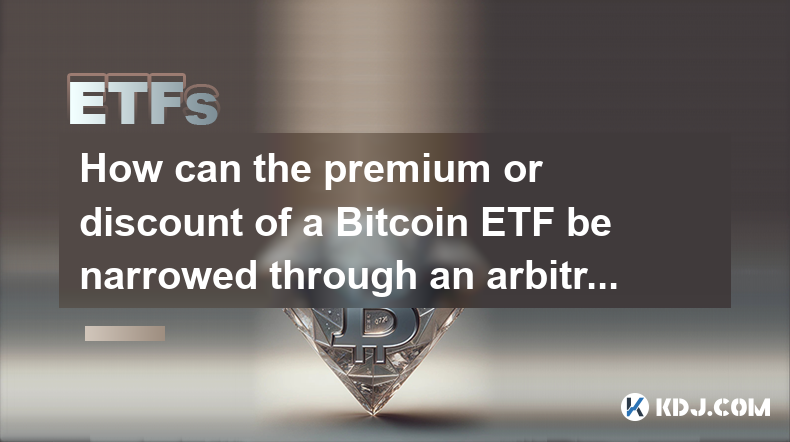
How can the premium or discount of a Bitcoin ETF be narrowed through an arbitrage mechanism?
Apr 09,2025 at 12:07am
Arbitrage mechanisms play a crucial role in narrowing the premium or discount of a Bitcoin Exchange Traded Fund (ETF). Understanding how these mechanisms work can provide valuable insights into the dynamics of Bitcoin ETFs and their relationship with the underlying asset. This article will delve into the specifics of how arbitrage can be used to align t...
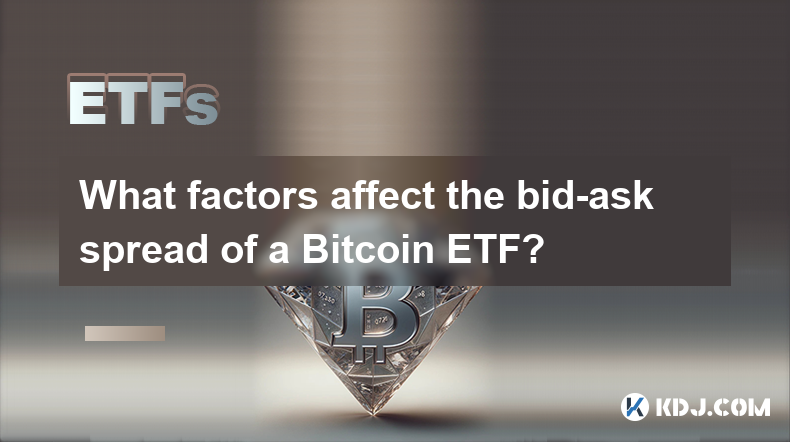
What factors affect the bid-ask spread of a Bitcoin ETF?
Apr 08,2025 at 08:50pm
The bid-ask spread of a Bitcoin Exchange Traded Fund (ETF) is a critical metric that investors and traders closely monitor. It represents the difference between the highest price a buyer is willing to pay (bid) and the lowest price a seller is willing to accept (ask). Several factors influence this spread, and understanding them can help investors make ...
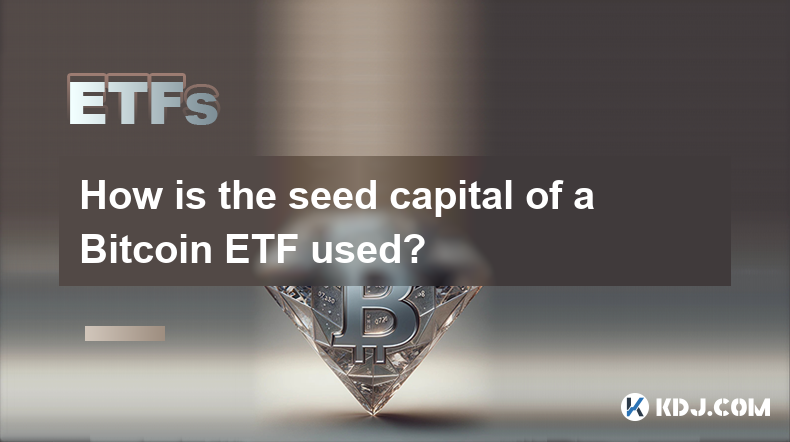
How is the seed capital of a Bitcoin ETF used?
Apr 10,2025 at 02:15pm
The seed capital of a Bitcoin ETF plays a crucial role in the establishment and operation of the fund. This initial investment is used to create the fund's underlying assets, manage operational costs, and ensure the ETF can start trading on an exchange. Understanding how this seed capital is utilized provides insight into the mechanics of Bitcoin ETFs a...

What is the difference between "physically backed" and "synthetic" Bitcoin ETFs in terms of holding assets?
Apr 10,2025 at 04:56pm
Bitcoin Exchange Traded Funds (ETFs) have become a popular way for investors to gain exposure to the cryptocurrency market without directly owning the underlying asset. There are two primary types of Bitcoin ETFs: physically backed and synthetic. Understanding the differences between these two types, particularly in terms of how they hold assets, is cru...

What is the difference in returns between long-term holding of a Bitcoin ETF and holding Bitcoin directly?
Apr 09,2025 at 04:15am
When considering the difference in returns between long-term holding of a Bitcoin ETF and holding Bitcoin directly, it's essential to understand the nuances and factors that affect each investment option. Both approaches have their unique advantages and potential drawbacks, which can significantly impact the overall returns over time. Understanding Bitc...

How is the "roll cost" of a futures Bitcoin ETF generated?
Apr 08,2025 at 01:22pm
The 'roll cost' of a futures Bitcoin ETF is a critical concept for investors to understand, as it directly impacts the performance of the ETF. In this article, we will delve into the mechanics of how the roll cost is generated, exploring the underlying processes and factors that contribute to this cost. Understanding Futures ContractsFutures contracts a...

How can the premium or discount of a Bitcoin ETF be narrowed through an arbitrage mechanism?
Apr 09,2025 at 12:07am
Arbitrage mechanisms play a crucial role in narrowing the premium or discount of a Bitcoin Exchange Traded Fund (ETF). Understanding how these mechanisms work can provide valuable insights into the dynamics of Bitcoin ETFs and their relationship with the underlying asset. This article will delve into the specifics of how arbitrage can be used to align t...

What factors affect the bid-ask spread of a Bitcoin ETF?
Apr 08,2025 at 08:50pm
The bid-ask spread of a Bitcoin Exchange Traded Fund (ETF) is a critical metric that investors and traders closely monitor. It represents the difference between the highest price a buyer is willing to pay (bid) and the lowest price a seller is willing to accept (ask). Several factors influence this spread, and understanding them can help investors make ...

How is the seed capital of a Bitcoin ETF used?
Apr 10,2025 at 02:15pm
The seed capital of a Bitcoin ETF plays a crucial role in the establishment and operation of the fund. This initial investment is used to create the fund's underlying assets, manage operational costs, and ensure the ETF can start trading on an exchange. Understanding how this seed capital is utilized provides insight into the mechanics of Bitcoin ETFs a...

What is the difference between "physically backed" and "synthetic" Bitcoin ETFs in terms of holding assets?
Apr 10,2025 at 04:56pm
Bitcoin Exchange Traded Funds (ETFs) have become a popular way for investors to gain exposure to the cryptocurrency market without directly owning the underlying asset. There are two primary types of Bitcoin ETFs: physically backed and synthetic. Understanding the differences between these two types, particularly in terms of how they hold assets, is cru...
See all articles






















































































